NGC Ventures Partner: How the Metaverse Drives the Development of the Creator Economy?
Original Author: Andrea Chang, Partner at NGC Ventures
Original Compilation: PANews
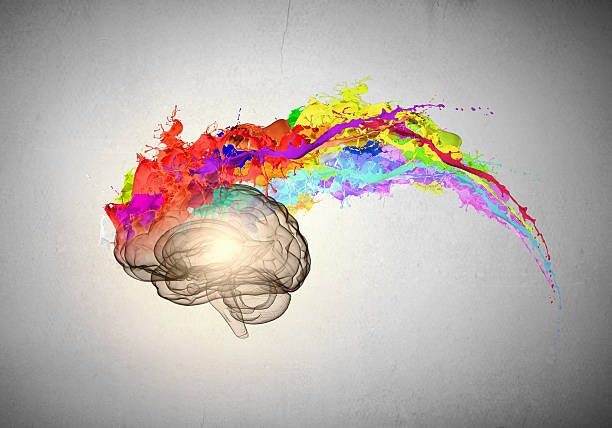
Source: Unsplash
The creator economy is defined as an economic model centered around independent content creators, with a market size exceeding $100 billion. It has been a pillar of existing social platforms, creating numerous opportunities for creators themselves, as well as for employees and partner brands.
As we mentioned in previous articles, the creator economy is crucial for the operation of the metaverse, closely related to other components such as virtual avatars, virtual economies, and gaming, impacting product development for both startups and established companies.
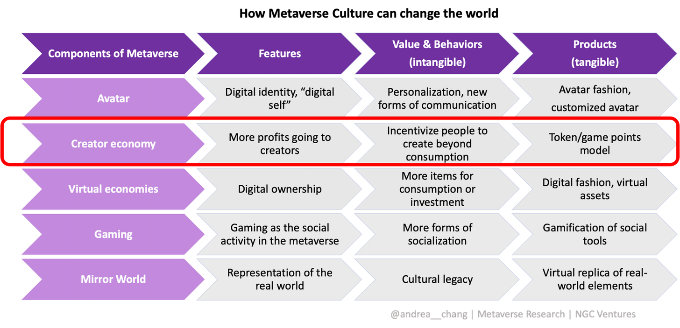
In this article, we will focus on how the metaverse can drive the development of the creator economy and how the metaverse version of the creator economy differs from the familiar creator economy of mainstream social media.
Current Social Media Platform's Creator Economy Source: Doug Sharpio
Key Elements of the Metaverse Version of the Creator Economy
For creators, Web 2.0 platforms like social media provide channels for content monetization and community interaction. For brands, creators can help them market to specific audiences with depth and frequency that traditional channels cannot match. In the metaverse version, the relationship among creators, platforms, and audiences is more democratic and dynamic, with participants gaining more autonomy, especially in "community-driven" metaverse projects. In metaverse applications, audiences have more space to interact with creators' works, and with the introduction of more tools, audiences can also become creators themselves. For example, one of the most funded metaverse games, The Sandbox, provides various tools to help developers build games, 3D assets, and sell NFTs, allowing creators to earn 95% of sales revenue.
In contrast to current social media, an interesting difference is that audiences have more opportunities to interact with creators and even become partners in pursuing team goals, such as playing games together and promoting social tokens/digital assets.
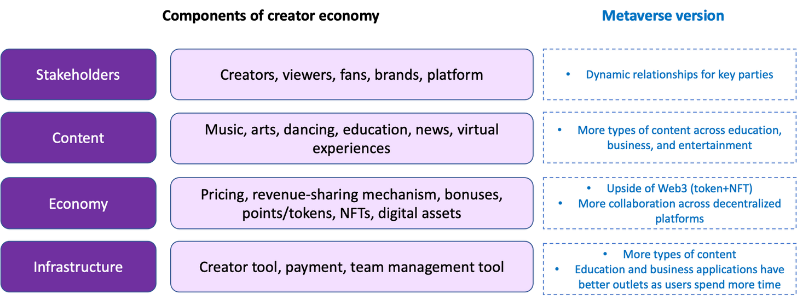
How Creators Benefit from Metaverse Applications
Broader Content Categories
The main difference brought by metaverse applications compared to existing platforms is that creators can build their content in a virtual space, whether it's virtual land or virtual buildings, creating new demands for 3D artists. As we mentioned in our previous article on metaverse culture, virtual assets such as virtual avatars and digital clothing are expected to give rise to new categories of creators. Among these, we anticipate increased demand for infrastructure and content related to music and gaming, with some existing platforms already showing such trends.

Source: GWI
We also expect that as hardware user experiences improve, people will spend more time in the metaverse, further promoting the development of non-entertainment applications such as business and education. For instance, Mesh for Teams, as Microsoft's enterprise metaverse, aims to transition most online meetings to a 3D environment.
Reducing Dependence on Brand Sales
Creators are highly dependent on brands for income, primarily because brand negotiation terms are more flexible, top stars have an advantage (luxury brands collaborating with celebrities have rich budgets), and most platforms have strict profit-sharing limits (creators need to reach a certain audience size to meet basic revenue-sharing standards). However, through new forms of activities and virtual participation, metaverse applications are expected to change this high dependence. For example, creators can build their own economy within the metaverse and have more opportunities to sell virtual goods to fans.
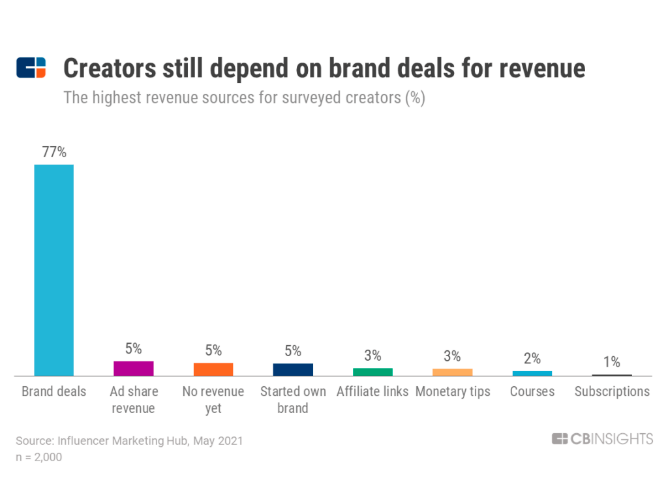
Providing Creators with Higher Return on Investment
According to a recent survey by digital identity management service Linktree in April this year, only 12% of full-time creators earn more than $50,000 annually, while 46% earn less than $1,000 a year. For example, Instagram's latest "badges" allow creators' live stream audiences to purchase and use additional features, but only if the creators have at least 10,000 followers, and Apple’s App Store takes a 30% cut. On YouTube, after the platform takes a 45% ad revenue share, creators with 20,000 monthly views earn about $500 a month.
The metaverse version of the creator economy can provide creators with more ways to earn money, including utilizing richer digital assets and leveraging the advantages of decentralized metaverse applications to gain returns through substantial token sharing and NFT sales.
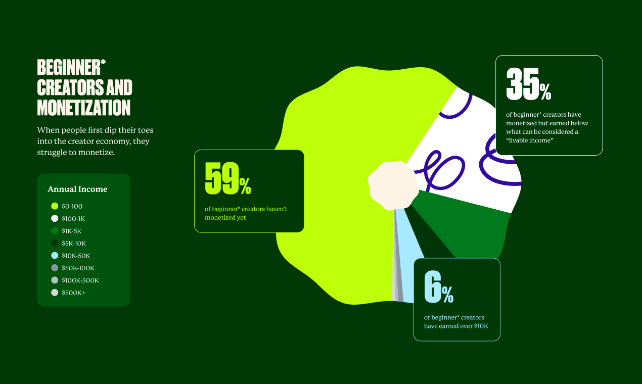
Source: Linktree
Insights: The Decentralized Metaverse of Web 3.0 Will Unlock More Opportunities for Creators
One major reason centralized social media platforms can charge such high fees is that they have vast audiences in the global market. Although platform shares can be as high as 30%-50%, creators have no better options, and platforms lack the competition and motivation to lower prices. Web 3.0 is expected to change this landscape, as most early-stage startups issuing tokens retain 20%-50% of the token supply specifically for ecosystem growth funds, a significant portion of which will be allocated to content creators and early community members.
Creators holding these tokens are like shareholders of emerging platforms, giving them more motivation to promote related services and create content. For example, Web 3 platforms like Rally allow creators to design their own social token economies for free, enabling creators' fans not only to support their creativity but also to become shareholders by holding tokens and sharing in the profits (or risks) of social tokens. In a metaverse environment, this mechanism is expected to deepen further, as digital asset rewards can extend from tokens to virtual land, NFT artworks, and more. Open metaverses like Decentraland have their own land economies, where creators can purchase land, build virtual venues, and then rent or sell them to others.
In a decentralized metaverse, the relationships among creators will also differ. The attention economy of mainstream social platforms is often a zero-sum game, where each creator is somewhat a competitor for audience attention, whereas in decentralized metaverse platforms, creators are fundamentally shareholders of the new platform. Therefore, we expect to see more cross-industry collaborations, further expanding the diversity of content in decentralized metaverses.
While it may be premature to discuss competition between these decentralized metaverse applications, including games, social spaces, and metaverse platforms, and centralized platforms, in the long run, as more choices and revenue opportunities emerge, they are expected to collectively incentivize creators to migrate to other platforms. After all, every new wave of technology gives rise to new categories of consumer applications.










